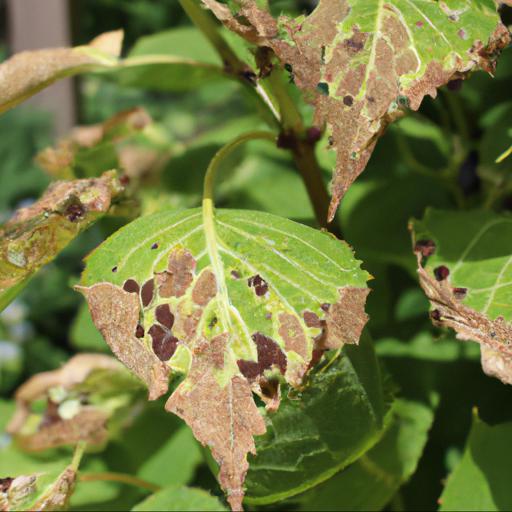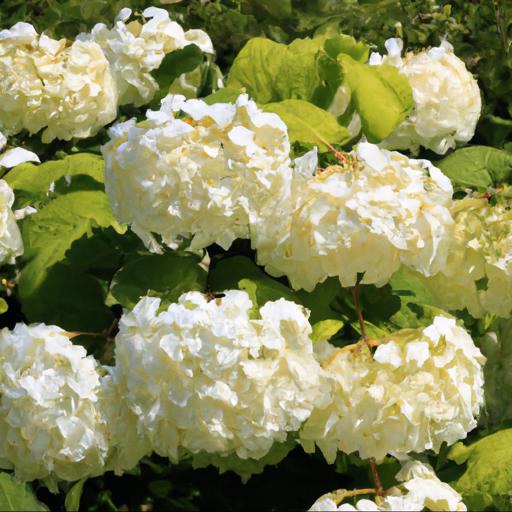Hydrangea quercifolia, also known as the oakleaf hydrangea, is a species of flowering shrub native to the southeastern United States. It is a deciduous shrub that grows in a variety of soil types and is known for its large, white, cone-shaped flowers and distinctive oak-like leaves.
The oakleaf hydrangea is a popular garden plant due to its beautiful flowers and easy maintenance. In this blog, we will discuss the various aspects of Hydrangea quercifolia, including its characteristics, growing conditions, and care tips. We will also explore the different ways that you can use this plant to enhance your landscape.
Benefits of growing hydrangea quercifolia

Growing a hydrangea quercifolia, also known as the oakleaf hydrangea, can bring beauty and life to any garden. Not only are oakleaf hydrangeas attractive and hardy, but they make for delightful additions to any open space.
Some of the main benefits of growing this captivating plant include its eye-catching blossoms and ease of care. Oakleaf hydrangeas are instantly recognizable by their showy clusters of white, pink or bluish flowers that appear during the summer months. The foliage changes from stunning shades of green to a deep, saturated red in the autumn months, adding beauty and depth to your garden.
These easy-care perennials can be planted in containers or in the ground, adding a touch of nature to any outdoor space. In addition to providing aesthetic appeal to your garden, oakleaf hydrangeas are low-maintenance plants, needing only minimal pruning once a year. These flowers are also tolerant of different conditions, happily growing in partial shade or in full sun.
When it comes to caring for these darling blooms, a little mulch each spring and a strong stream of water once every two weeks is all that’s needed to keep them looking their best. Oakleaf hydrangeas make beautiful additions to any outdoor space, and with minimal maintenance, they are easy to keep in tip-top shape.
With their stunning heart-shaped leaves and cluster of blossoms, these hardy plants can bring plenty of charm to any garden. Whether planted by themselves or with a mix of other flowers and plants, the benefits of growing hydrangea quercifolia make it a wonderful addition to any outdoor space.
Tips for planting and caring for hydrangea quercifolia

As a UK garden expert, I’m well versed in planting and caring for Hydrangea quercifolia, also known as Oak-Leaf Hydrangea. This beautiful flowering shrub is a great addition to any sunny garden spot and will provide lovely blooms of white flower clusters throughout the summer months. However, correct planting and care is necessary to ensure a successful establishment.
When planting Hydrangea quercifolia, make sure the spot you choose is sunny or partially shaded and moist but well-draining, avoiding overly wet areas as the plant’s roots will quickly rot if sat in soggy soil. It’s important to mix compost into the planting area and to dig a hole large enough to accommodate the root ball with a little extra space either side.
Water the plant generously after its first planting and water regularly for the initial year in order to ki ck start its growth. In terms of ongoing care, the most important thing is to ensure Hydrangea quercifolia is given regular watering, especially during dry periods. Mulching is also beneficial as this will help to retain moisture levels and suppress weeds.
Pruning can encourage more dense and bushier growth and it’s possible to prune the shrub back to around 25cm just after flowering. Fertilizing the shrub three times a year will also help to keep it looking its best.
Hydrangea quercifolia may struggle in cold winters, so if possible it’s worth taking measures to protect it during the colder months. In summary, planting and caring for Hydrangea quercifolia requires a little thought, effort and attention in order to guarantee success. Spending some extra time on the initial planting and providing regular care and maintenance afterwards is essential if you want to take pleasure in beautiful white flower clusters during the summer months.
Common problems with hydrangea quercifolia

Hydrangea quercifolia, commonly known as the Oakleaf Hydrangea, is an impressive and popular flowering shrub suitable for a variety of garden styles. It is renowned for its attractive foliage and huge flower heads which occur in stunning shades of white, pink or blue. Despite its beauty and hardiness, it can suffer from a range of problem conditions which can compromise its growth and flowering.
One of the most common problems affecting Hydrangea quercifolia is fungal leaf spot, which occurs when the leaves become infected with a range of fungal species. Symptoms of leaf spot include the appearance of small, round, dark spots on the leaves, which can sometimes become covered in a layer of white fungus.
Left untreated, the infection can spread over the entire plant and cause leaf loss and wilting. To reduce the risk of leaf spot, cultivation practices such as avoiding overcrowding, planting in an area with good air circulation and pruning to reduce overcrowding should be carried out. Another common problem which Hydrangea quercifolia can suffer from is powdery mildew.
This fungus can cause the leaves to become covered in a white grey powder, causing the plants to lose vigor and become stunted. Treatment for this condition involves prevention by avoiding overcrowding and ensuring that the plant has enough space and airflow to dry quickly after rainfall.
For existing infections, fungicides such as sulfur or neem oil can be used, as well as foliar feeds containing fungicides. In conclusion, Hydrangea quercifolia is an eye-catching and hardy shrub, suitable for many different garden styles. However, it can also be prone to a range of common problems such as leaf spot and powdery mildew.
Good horticultural practices, such as avoiding overcrowding and pruning, can help to prevent these problems. In addition, fungicides can be used to reduce existing infection.
How to use hydrangea quercifolia in landscaping
Hydrangea quercifolia, also known as oakleaf hydrangea, is a great addition to your landscape; whether you’re looking for a beautiful and low-maintenance plant for your yard or garden, this deciduous shrub is the ideal solution. Hydrangea quercifolia is a multi-season plant, featuring striking white blooms in the summer, and incredible displays of burgundy foliage and cinnamon-colored exfoliating bark in the winter months. It’s easy to maintain and propagates itself without much effort.
When using hydrangea quercifolia in your landscape, it’s important to keep in mind a few essential tips. First, be sure to give it plenty of space; it can grow up to 6 feet tall, and needs at least 2 feet of space all around it.
This will help it to spread out and look its best. Second, plant it in a partial shade location; it prefers dappled sunlight and should not be placed in direct sunlight.
Fertilize with slow-release, balanced fertilizer in early spring (before leaves have fully appeared) to promote healthy growth throughout the season. Hydrangea quercifolia is perfect for almost any landscaping project. You can use it as a specimen plant, or in groupings or borders to create a gorgeous focal point or complete a garden design.
It looks great next to a pond, in foundation plantings, or among other plants, like hostas or ferns. And due to its long bloom period and gorgeous foliage, it’s sure to be a hit in your garden.
For an added touch of beauty, consider growing a climbing Hydrangea quercifolia vine up a trellis or arbor. With these tips, you’ll be sure to enjoy years of beautiful blooms and foliage.
Final Touch
Hydrangea quercifolia, also known as oakleaf hydrangea, is an attractive deciduous shrub with large, showy blooms and distinctive oak-like leaves. This hardy plant is easy to grow and requires minimal maintenance. It is an excellent choice for shady areas, as well as for providing year-round interest in the garden.
Hydrangea quercifolia is a great addition to any landscape, offering a beautiful display of foliage and flowers.
FAQ
What is the scientific name of Hydrangea quercifolia?
The scientific name of Hydrangea quercifolia is Hydrangea quercifolia L.
What are the common names for Hydrangea quercifolia?
Common names for Hydrangea quercifolia include oakleaf hydrangea, mountain hydrangea, and bull hydrangea.
What is the natural habitat of Hydrangea quercifolia?
The natural habitat of Hydrangea quercifolia is in woodlands, thickets, and along stream banks in the southeastern United States.
How does Hydrangea quercifolia reproduce?
Hydrangea quercifolia reproduces through seeds, which are spread by birds, or through vegetative propagation from cuttings.
What are the benefits of planting Hydrangea quercifolia?
The benefits of planting Hydrangea quercifolia include its attractive foliage and flowers, its drought tolerance, its ability to attract pollinators, and its low maintenance requirements.
How can Hydrangea quercifolia be propagated?
Hydrangea quercifolia can be propagated by softwood cuttings, layering, or division.

